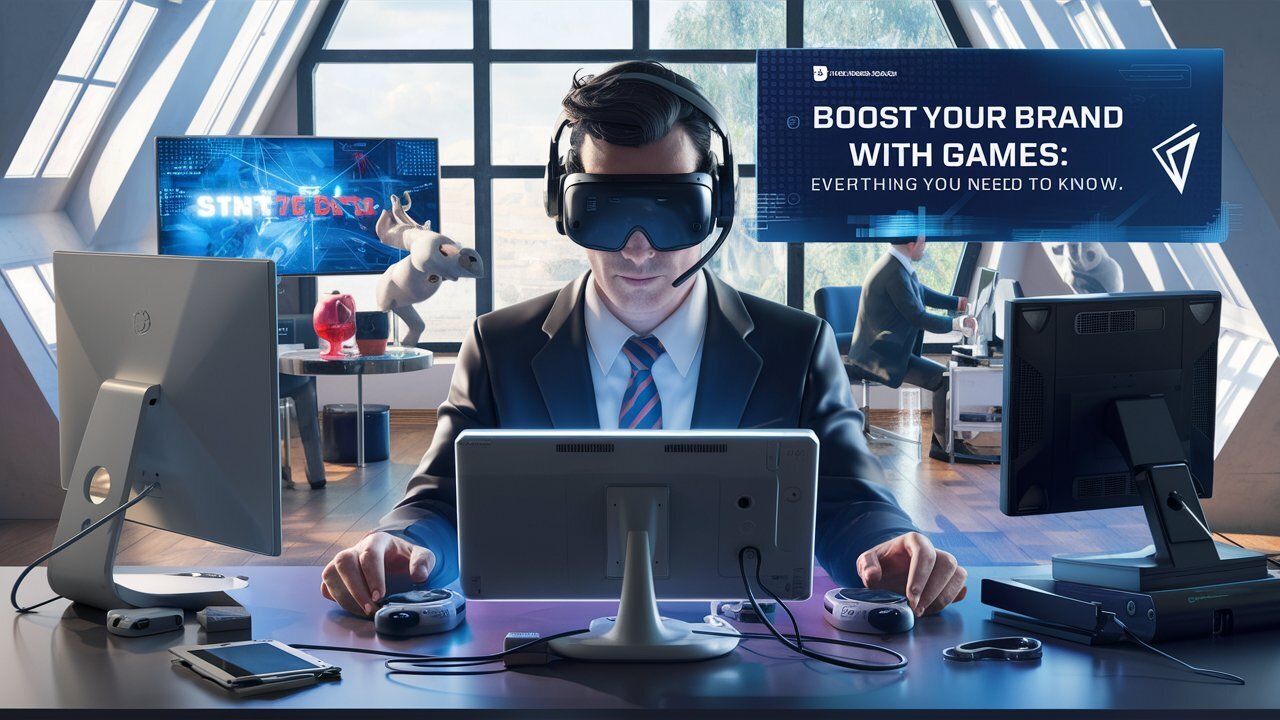Boost Your Brand with Games: Everything You Need to Know
27.03.2024

In today's fast-paced digital landscape, brands are constantly searching for innovative ways to engage their audience. One of the most effective strategies gaining traction is gamification—the integration of game elements into marketing campaigns. This blog delves into the world of games for brand promotion, exploring how companies can harness the power of gaming to boost engagement, foster brand loyalty, and drive sales. From understanding the psychology behind gamification to exploring real-world success stories, this comprehensive guide covers everything you need to know to get started on your brand's gaming journey.
Boost Your Brand with Games:
- Everything You Need to Know In an era where consumer attention is more fragmented than ever, brands are exploring creative ways to engage their target audiences. One powerful tool that has emerged in recent years is gamification—the application of game design elements in non-game contexts, particularly in marketing. From leaderboards to reward systems, games have the potential to transform how consumers interact with brands, turning passive observers into active participants.
Understanding Gamification in Marketing
- It is the innate human nature that socializing, winning achievements and competing with one another drives us. Also, brands can use marketing strategies that have elements like challenges, rewards, points and badges among others to create memorable and engaging experiences for their customers. This strategy pulls attention and prompts continual engagement thereby playing a vital role in developing brand loyalty. A typical example includes a mobile game a manufacturer might develop where individuals could earn points or get discounts by completing certain tasks pointing towards their product. Therefore, this strategy would virally engage consumers into choosing particular brands.
The Rise of Gamification in Marketing
- Gamification might be defined as a term that stands for applying game design elements outside the domain of games themselves especially within advertisement platforms to encourage user involvement and motivate desirable actions. The trend has become popular as organizations see its usefulness in making things stick in people's minds; unlike conventional ways of advertising that rely on passive consumption, gamification calls more active participation hence making the audience have some connection with the brand.
Why Video Games Are Effective in Promoting Brands
- Several reasons make games an efficient tool for brand promotion. For one, they are captivating by nature. Being able to satisfy most people’s needs for reward, competition and accomplishment, they make it easy to capture and sustain player’s attention. Users who play the branded game interact with the brand actively as opposed to just watching an ad now and then increasing their emotional attachment towards the company.
- Additionally, virality is another noteworthy aspect of using games in promoting brands. A well-developed game that captures players’ interests has a potentiality to become viral, thus reaching even those who were not originally targeted by the brand’s advertising strategy. This is particularly true for games that have social sharing elements in them, such as buddy challenges or leaderboard rankings. In this case, brands enhance word of mouth marketing by motivating people to reveal their achievements.
- Moreover, video games provide crucial information that can be used to enhance marketing tactics. By monitoring gamer behavior, brands can better understand what drives their audience, the types of content they love most and how they interact with them.
Examples of Successful Brand Games
- Many companies have successfully woven games in their marketing campaigns with exceptional results. For instance, since its introduction “Monopoly” game has become part and parcel of McDonald’s annual public relations stunts. Through this approach, customers are able to collect game pieces in anticipation for rewards hence creating excitement around the product. This increased sales and client loyalty.
- Another compelling example is Nike’s “NikeFuel Missions” campaign where the use of fitness gear was gamified. The community of motivated and dedicated customers was built as users could participate in several fitness challenges to compete against each other while receiving prizes. Besides marketing Nike products, this campaign also enhanced its correlation with health and wellness.